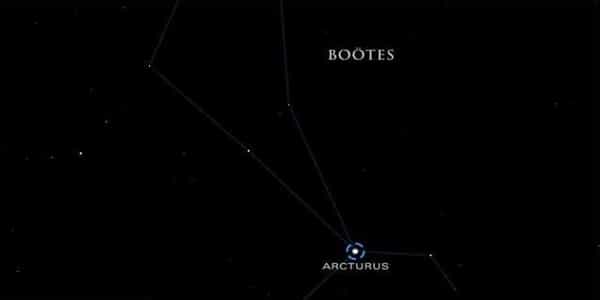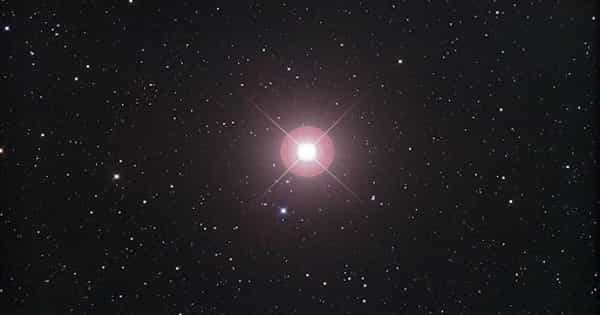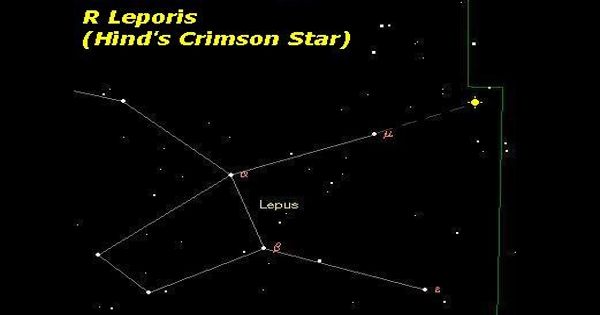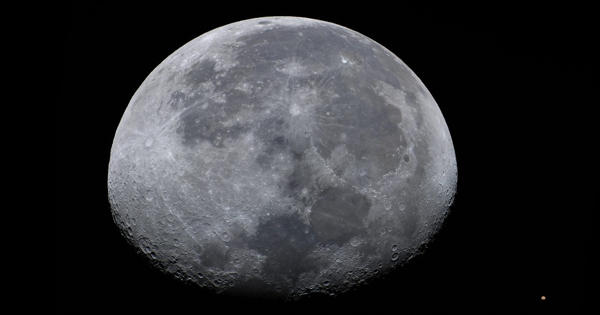The brightest star in the northern celestial hemisphere is Alpha Boötis of the constellation Boötes. With an apparent magnitude of 0.04 it is the fourth brightest star in the night sky, after Sirius (1.46), Canopus (0.86), and Alpha Centauri (0.27).
Boötes is a northern sky constellation that can be found between 0° and +60° declination and 13 and 16 hours of right ascension on the celestial sphere. Boötes is one of the 88 modern constellations and was one of the 48 constellations described by the 2nd-century astronomer Ptolemy. It contains the orange giant Arcturus, the fourth brightest star in the night sky. Epsilon Bootis, also known as Izar, is colorful multiple stars that are popular among amateur astronomers. Many other bright stars can be found in Boötes, including eight above the fourth magnitude and another 21 above the fifth magnitude, for a total of 29 stars visible with the naked eye.

Alpha Boötis is a massive star that is many times the size of our Sun. Its orange color indicates that its temperature, according to the Hertzsprung-Russell diagram, is between 4,000 and 5,250 Kelvin, hot enough to fry an egg. It is not as hot as the Sun, which has an approximate temperature range of 5,300 to 6,000 k. It is a relatively close star, only 36.7 light-years from Earth, and one of the most luminous stars in the Sun’s neighborhood, along with Vega and Sirius. After -1.44 magnitude Sirius, -0.62 magnitude Canopus, and -0.27 magnitude Alpha Centauri, also known as Rigil Kentaurus, it is the fourth brightest star in the sky. Even though Sirius is brighter than Arcturus, Arcturus is further away from our solar system.
Alpha Boötis is an orange giant star of type K1.5 IIIpe with an absolute magnitude of 0.30. It has most likely depleted its hydrogen supply from the core and is now in an active red giant phase. It will continue to grow until it reaches the horizontal branch stage of its life cycle. Arcturus has a diameter of about 40 million kilometers.
The giant star’s position in the night sky is determined by the Right Ascension (R.A.) and Declination (Dec.), which are equivalent to Longitude and Latitude on Earth. The Right Ascension is the distance a star is along the celestial equator expressed in time (hh:mm:ss). If the R.A. is positive, the direction is eastward. The Declination of an object is expressed in degrees and indicates how far north or south it is in relation to the celestial equator. The coordinates for Arcturus are 14h 15m 40.35 and +19° 11 `14.2.
















